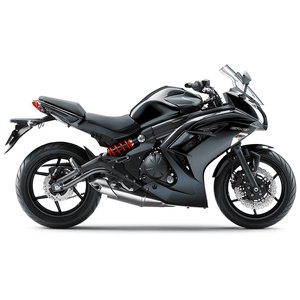Kawasaki ER-6F (2012–2016) Review: The Swiss Army Knife of Middleweight Motorcycles
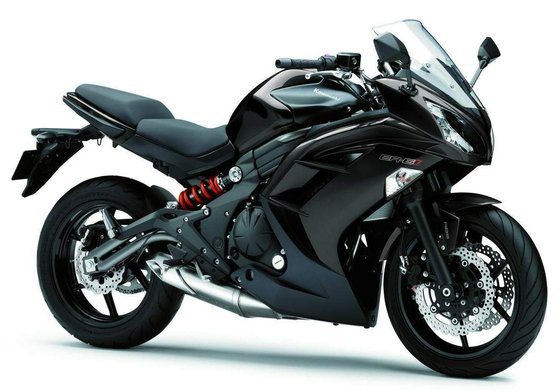
If there’s one motorcycle that embodies the phrase “jack of all trades,” it’s the Kawasaki ER-6F. Produced from 2012 to 2016, this generation of the ER-6F (also known as the Ninja 650 in some markets) strikes a rare balance between sporty aggression and everyday usability. After spending time with this machine, it’s clear why it remains a favorite among riders who want a bike that can commute, tour, and occasionally flirt with backroad curves—all without breaking a sweat. Let’s dive into what makes this parallel-twin-powered workhorse so compelling.
Design & Ergonomics: Sharp Lines, Approachable Stance
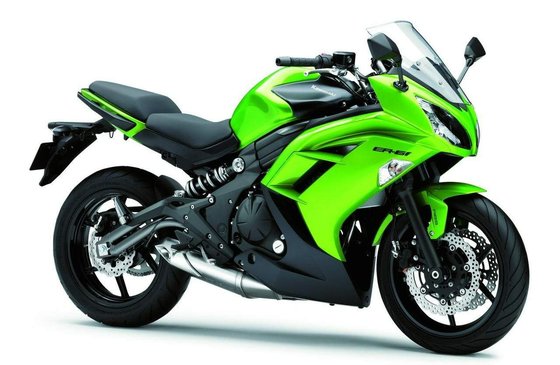
The ER-6F’s design screams “sportbike” at first glance, thanks to its angular fairings, dual headlamps, and a windscreen that looks borrowed from Kawasaki’s supersport lineup. The bodywork isn’t just for show—it’s wind-tunnel-tested to reduce buffeting, and the three-position adjustable screen (tweaked with a hex key) lets riders customize airflow. The Candy Lime Green and Metallic Spark Black color schemes are quintessential Kawasaki, radiating a boldness that turns heads at stoplights.
But where the ER-6F truly shines is in its ergonomics. The 805 mm (31.7-inch) seat height is accessible for riders of varying statures, and the slightly upright riding position strikes a Goldilocks zone between sporty crouch and relaxed cruiser. The rubber-mounted handlebars and footpegs dampen vibrations, making hour-long rides fatigue-free. Even the pillion seat gets love, with thick cushioning and ergonomic grips that won’t leave passengers white-knuckling the rear rails.
Engine Performance: Friendly Firepower
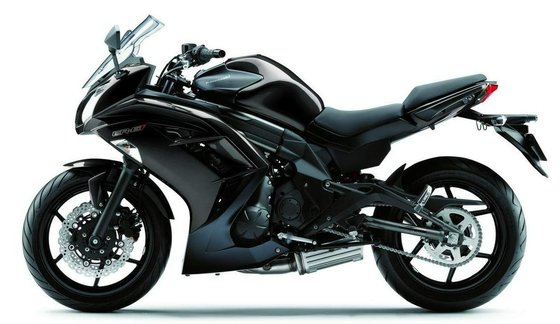
At the heart of the ER-6F lies a 649 cc liquid-cooled parallel-twin engine, tuned for broad, usable power. With 72 HP (53 kW) at 8,500 RPM and 64–66 Nm (47–48 lb-ft) of torque peaking around 6,500–7,000 RPM, this engine isn’t about arm-yanking acceleration. Instead, it delivers a smooth, linear surge that’s forgiving for beginners yet engaging enough for seasoned riders. Throttle response from the dual 38 mm Keihin injectors is crisp, and the DFI® system ensures frugal fuel consumption—think 4.7 L/100 km (50 MPG) during mixed riding.
Twist the throttle, and the engine hums with a muted growl, its 180-degree crank and balancer shaft keeping vibrations in check. The six-speed transmission shifts with a light click, though the cable-operated clutch could feel vague to riders accustomed to hydraulic systems. First gear is short, perfect for city crawls, while sixth gear settles into a relaxed 5,000 RPM at 110 km/h (68 mph)—ideal for highway cruising.
Handling & Suspension: Lightweight Agility
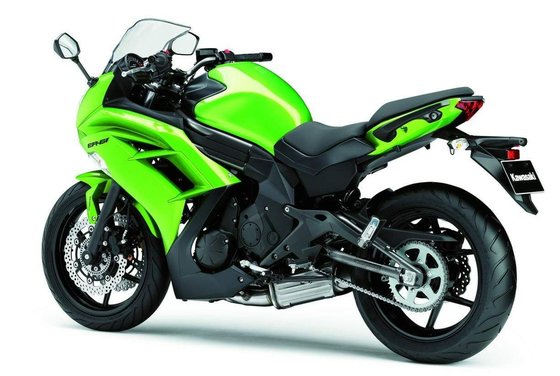
Weighing in at 209 kg (460 lbs) wet, the ER-6F feels remarkably nimble. The perimeter frame—a high-tensile steel twin-pipe design—keeps the bike narrow between the knees, contributing to a low center of gravity. Combined with a 25-degree rake and 106 mm (4.2 inches) of trail, the steering is quick but not twitchy. Flicking the bike through serpentine roads feels intuitive, and the Dunlop Roadsmart II tires (120/70-ZR17 front, 160/60-ZR17 rear) offer ample grip for spirited riding.
Suspension duties are handled by a 41 mm telescopic fork up front and an offset laydown shock at the rear, both tuned for comfort over outright sportiness. While hard charging might reveal their limitations, the setup soaks up potholes and highway expansion joints with ease. Preload adjustment on the rear shock lets riders fine-tune the ride for solo or two-up adventures.
Technology & Features: No Frills, Just Function
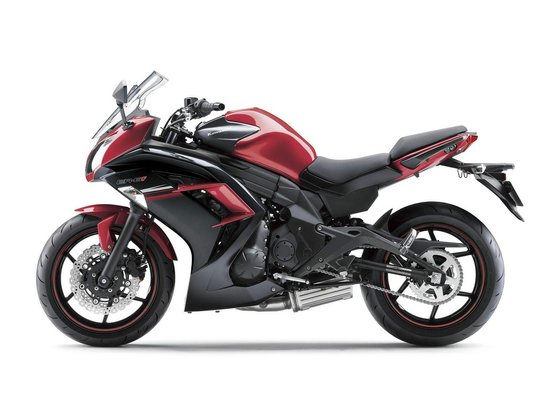
The ER-6F’s analog-digital dashboard is a study in simplicity. A large tachometer dominates the upper half, while the LCD screen below displays speed, fuel economy, gear position, and even an “Economical Riding” indicator—a nudge to shift early for better mileage. ABS was optional (adding 2 kg), and while the system isn’t as sophisticated as modern cornering ABS, it provides reassuring stops with dual 300 mm front discs and a single 220 mm rear rotor.
Competition: How Does It Stack Up?
The middleweight naked/sport segment is fiercely competitive. Here’s how the ER-6F fares against its rivals:
-
Suzuki SV650 (2016–present):
The SV650’s V-twin engine packs more low-end grunt, and its steel trellis frame is equally agile. However, the ER-6F counters with better wind protection and a more refined cockpit. The Suzuki’s minimalist design appeals to purists, but Kawasaki’s build quality feels more premium. -
Yamaha MT-07 (2014–present):
Yamaha’s CP2 engine is a torque monster, and the MT-07’s naked styling is trendier. Yet the ER-6F’s semi-faired design and adjustable windscreen make it a better tourer. The Yamaha also lacks a gear position indicator—a small but glaring omission for commuters. -
Honda CB650F (2014–2018):
Honda’s inline-four engine delivers a thrilling top-end scream, but it’s peakier and less beginner-friendly. The ER-6F’s parallel twin offers smoother power delivery and better fuel range (16L vs. Honda’s 17.3L tank with thirstier habits).
Verdict: The ER-6F isn’t the best at any one thing, but its versatility is unmatched. It’s the ideal choice for riders who want a single bike to handle daily duties, weekend rides, and occasional trips.
Maintenance: Keeping Your ER-6F in Peak Condition
Owning an ER-6F is relatively hassle-free, but staying on top of maintenance ensures longevity. Here are key tips:
-
Oil Changes:
Use 1.8L of SAE 10W-40 (API SG or higher) with each oil change. Synthetic oil is recommended for its thermal stability, especially if you’re riding in hot climates or pushing the bike hard. -
Valve Adjustments:
Valve clearances should be checked every 26,000 km (16,000 miles). Intake valves: 0.15–0.21 mm (0.006–0.008 in), exhaust: 0.22–0.31 mm (0.009–0.012 in). A shim-under-bucket system means this job is best left to professionals. -
Chain Care:
The 114-link chain and 15/46 sprocket combo requires regular cleaning and lubrication. Adjust slack to 25–35 mm (1.0–1.4 in) when cold. -
Brake Fluid:
Flush DOT 4 fluid every two years. Spongy levers? Check the front 300 mm discs for warping—a common issue if the bike’s been ridden aggressively. -
Cooling System:
The 1.2L liquid-cooling system needs periodic flushing. Watch for leaks around the water pump—a known weak spot on high-mileage ER-6Fs.
Pro Tip: Upgrade to aftermarket levers or a USB charging port for added convenience. MOTOPARTS.store stocks a range of compatible accessories to personalize your ride.
Final Thoughts: A Motorcycle That Grows With You
The Kawasaki ER-6F is the kind of bike that adapts to your riding journey. For new riders, it’s forgiving and confidence-inspiring. For veterans, it’s a blank canvas for mods—think slip-on exhausts, rearsets, or even track-day fairings. And for everyone, it’s a reminder that motorcycles don’t need to be extreme to be exhilarating. Whether you’re filtering through traffic, carving canyons, or planning a weekend getaway, the ER-6F handles it all with a grin-inducing ease that’s hard to replicate.
So, if you’re browsing MOTOPARTS.store for your next upgrade, remember: this bike isn’t just about parts—it’s about possibilities. Slap on a new windscreen, tweak the suspension, or just keep it stock. Either way, the ER-6F will keep you riding longer, farther, and with more joy than you’d expect from a middleweight.
Specifications sheet
| Engine | |
|---|---|
| Stroke: | Four-stroke |
| Max power: | 53 kW | 71.0 hp |
| Max torque: | 66 Nm |
| Fuel system: | Fuel Injection (Keihin 38mm throttle bodies) |
| Max power @: | 8500 rpm |
| Displacement: | 649 ccm |
| Fuel control: | Double Overhead Cams/Twin Cam (DOHC) |
| Max torque @: | 7000 rpm |
| Bore x stroke: | 83.0 x 60.0 mm (3.3 x 2.4 in) |
| Configuration: | Inline |
| Cooling system: | Liquid |
| Compression ratio: | 11.3:1 |
| Number of cylinders: | 2 |
| Valves per cylinder: | 4 |
| Dimensions | |
|---|---|
| Wheelbase: | 1410 mm (55.5 in) |
| Dry weight: | 194 |
| Wet weight: | 209 |
| Seat height: | 805 mm (31.7 in) |
| Overall width: | 770 mm (30.3 in) |
| Overall height: | 1180 mm (46.5 in) |
| Overall length: | 2110 mm (83.1 in) |
| Ground clearance: | 130 mm (5.1 in) |
| Fuel tank capacity: | 16 L (4.2 US gal) |
| Drivetrain | |
|---|---|
| Final drive: | chain |
| Gear ratios: | ['1st: 2.438 (39/16)', '2nd: 1.714 (36/21)', '3rd: 1.333 (32/24)', '4th: 1.111 (30/27)', '5th: 0.966 (28/29)', '6th: 0.852 (23/27)'] |
| Chain length: | 114 |
| Transmission: | 6-speed, wet multi-disc clutch |
| Rear sprocket: | 46 |
| Front sprocket: | 15 |
| Maintenance | |
|---|---|
| Engine oil: | 10W40 |
| Brake fluid: | DOT 4 |
| Spark plugs: | NGK CR9EIA-9 |
| Spark plug gap: | 0.9 |
| Coolant capacity: | 1.2 |
| Forks oil capacity: | 1.2 |
| Engine oil capacity: | 1.8 |
| Engine oil change interval: | Every 5000km or 2 years |
| Valve clearance (intake, cold): | 0.15–0.21 mm |
| Valve clearance check interval: | 24,000 km / 15,000 mi |
| Valve clearance (exhaust, cold): | 0.22–0.31 mm |
| Recommended tire pressure (rear): | 2.5 bar (36 psi) |
| Recommended tire pressure (front): | 2.25 bar (33 psi) |
| Chassis and Suspension | |
|---|---|
| Rake: | 25° |
| Frame: | Perimeter high-tensile steel |
| Trail: | 106 mm (4.1 in) |
| Rear tire: | 160/60z-17 |
| Front tire: | 120/70z-17 |
| Rear brakes: | 1 x 220mm petal disc, 1-piston caliper (ABS optional) |
| Front brakes: | 2 x 300mm petal discs, 2-piston calipers (ABS optional) |
| Rear suspension: | Offset laydown monoshock, adjustable preload, 130mm (5.1 in) travel |
| Front suspension: | 41mm telescopic fork, 120mm (4.7 in) travel |



